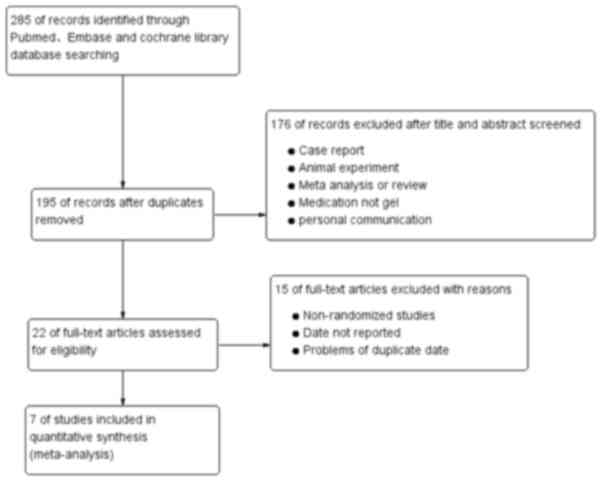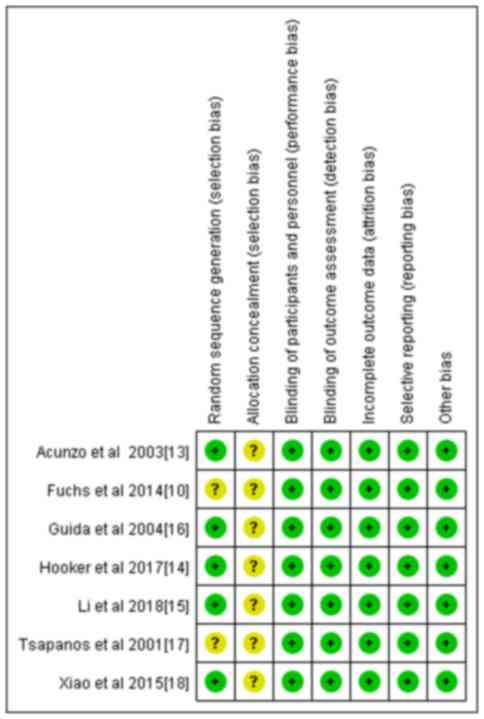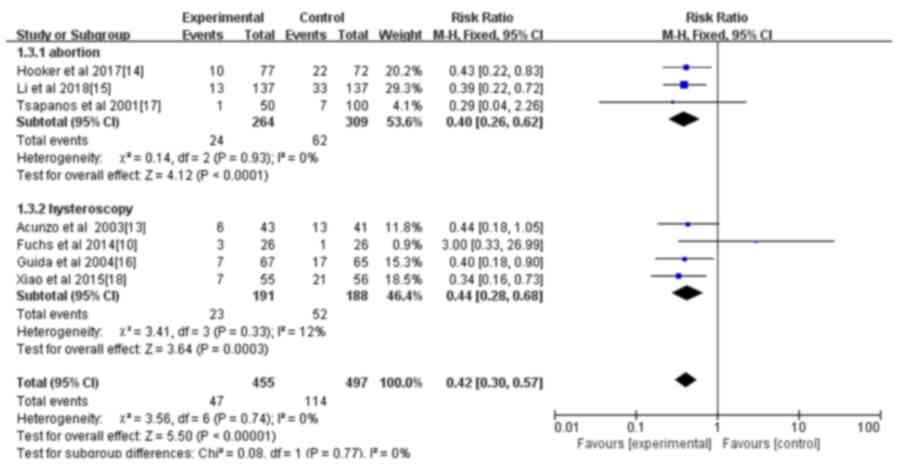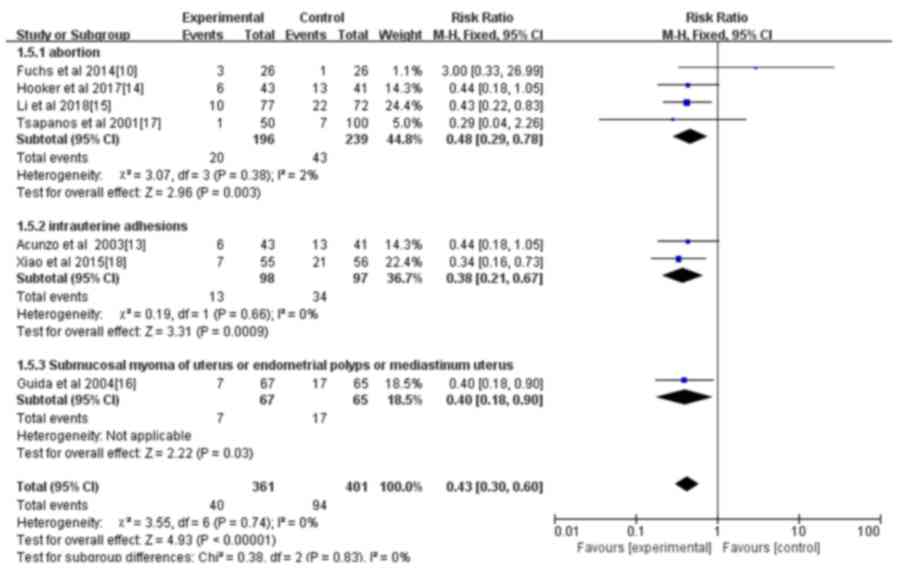|
1
|
Vancaillie TG and Garad R: Asherman's
syndrome. Aust Nurs J. 20:34–36. 2013.PubMed/NCBI
|
|
2
|
Yamamoto N, Takeuchi R, Izuchi D, Yuge N,
Miyazaki M, Yasunaga M, Egashira K, Ueoka Y and Inoue Y:
Hysteroscopic adhesiolysis for patients with Asherman's syndrome:
Menstrual and fertility outcomes. Reprod Med Biol. 12:159–166.
2013.PubMed/NCBI View Article : Google Scholar
|
|
3
|
Salazar CA, Isaacson K and Morris S: A
comprehensive review of Ashermanʼs syndrome. Curr Opin Obstet
Gynecol. 29:249–256. 2017.PubMed/NCBI View Article : Google Scholar
|
|
4
|
Mehedintu C, Ionescu O, Rotaru AM,
Antonovici M, Plotogea M, Berceanu C, Vladareanu S and Bratila E:
Asherman's syndrome after an uncomplicated cesarian section.
Gineco. 12:166–168. 2016.
|
|
5
|
Friedman A, DeFazio J and DeCherney A:
Severe obstetric complicantions after aggressive treatment of
asherman syndrome. Obstet Gynecol. 67:864–867. 1986.PubMed/NCBI View Article : Google Scholar
|
|
6
|
Bosteels J, Weyers S, D'Hooghe TM,
Torrance H, Broekmans FJ, Chua SJ and Mol BWJ: Anti-adhesion
therapy following operative hysteroscopy for treatment of female
subfertility. Cochrane Database Syst Rev.
11(CD011110)2017.PubMed/NCBI View Article : Google Scholar
|
|
7
|
Itano N: Simple primary structure, complex
turnover regulation and multiple roles of hyaluronan. J Biochem.
144:131–137. 2008.PubMed/NCBI View Article : Google Scholar
|
|
8
|
Salwowska NM, Bebenek KA, Żądło DA and
Wcisło-Dziadecka DL: Physiochemical properties and application of
hyaluronic acid: A systematic review. J Cosmet Dermatol.
15:520–526. 2016.PubMed/NCBI View Article : Google Scholar
|
|
9
|
Hong MK and Ding DC: Seprafilm®
application method in laparoscopic surgery. JSLS.
21(e2016.00097)2017.PubMed/NCBI View Article : Google Scholar
|
|
10
|
Fuchs N, Smorgick N, Ben Ami I, Vaknin Z,
Tovbin Y, Halperin R and Pansky M: Intercoat (Oxiplex/AP Gel) for
preventing intrauterine adhesions after operative hysteroscopy for
suspected retained products of conception: Double-blind,
prospective, randomized pilot study. J Minim Invasive Gynecol.
21:126–130. 2014.PubMed/NCBI View Article : Google Scholar
|
|
11
|
The American Fertility Society
classifications of adnexal adhesions distal tubal occlusion tubal
occlusion secondary to tubal ligation tubal pregnancies Mullerian
anomalies and intrauterine adhesions. Fertil Steril. 49:944–955.
1988.
|
|
12
|
Higgins JP and Green S: Cochrane handbook
for systematic reviews of interventions. Cochrane Book Series,
2008.
|
|
13
|
Acunzo G, Guida M, Pellicano M, Tommaselli
GA, Di Spiezio Sardo A, Bifulco G, Cirillo D, Taylor A and Nappi C:
Effectiveness of auto-cross-linked hyaluronic acid gel in the
prevention of intrauterine adhesions after hysteroscopic
adhesiolysis: A prospective, randomized, controlled study. Hum
Reprod. 18:1918–1921. 2003.PubMed/NCBI View Article : Google Scholar
|
|
14
|
Hooker AB, de Leeuw R, van de Ven PM,
Bakkum EA, Thurkow AL, Vogel NEA, van Vliet HAAM, Bongers MY,
Emanuel MH, Verdonkschot AEM, et al: Prevalence of intrauterine
adhesions after the application of hyaluronic acid gel after
dilatation and curettage in women with at least one previous
curettage: Short-term outcomes of a multicenter, prospective
randomized controlled trial. Fertil Steril. 107:1223–1231.e3.
2017.PubMed/NCBI View Article : Google Scholar
|
|
15
|
Li X, Wu L, Zhou Y, Fan X, Huang J, Wu J,
Yu R, Lou J, Yang M, Yao Z and Xue M: New crosslinked hyaluronan
gel for the prevention of intrauterine adhesions after dilation and
curettage in patients with delayed miscarriage: A prospective,
multicenter, randomized, controlled trial. J Minim Invasive
Gynecol. 26:94–99. 2019.PubMed/NCBI View Article : Google Scholar
|
|
16
|
Guida M, Acunzo G, Di Spiezio Sardo A,
Bifulco G, Piccoli R, Pellicano M, Cerrota G, Cirillo D and Nappi
C: Effectiveness of auto-crosslinked hyaluronic acid gel in the
prevention of intrauterine adhesions after hysteroscopic surgery: A
prospective, randomized, controlled study. Hum Reprod.
19:1461–1464. 2004.PubMed/NCBI View Article : Google Scholar
|
|
17
|
Tsapanos VS, Stathopoulou LP,
Papathanassopoulou VS and Tzingounis VA: The role of Seprafilm
bioresorbable membrane in the prevention and therapy of endometrial
synechiae. J Biomed Mater Res. 63:10–14. 2002.PubMed/NCBI View Article : Google Scholar
|
|
18
|
Xiao S, Wan Y, Zou F, Ye M, Deng H, Ma J,
Wei Y, Tan C and Xue M: Prevention of intrauterine adhesion with
auto-crosslinked hyaluronic acid gel: A prospective, randomized,
controlled clinical study. Zhonghua Fu Chan Ke Za Zhi. 50:32–36.
2015.(In Chinese). PubMed/NCBI
|
|
19
|
Wang M, Liu C and Xiao W: Intra-articular
injection of hyaluronic acid for the reduction in joint adhesion
formation in a rabbit model of knee injury. Knee Surg Sports
Traumatol Arthrosc. 22:1536–1540. 2013.PubMed/NCBI View Article : Google Scholar
|
|
20
|
Knopf-Marques H, Pravda M, Wolfova L,
Velebny V, Schaaf P, Vrana NE and Lavalle P: Hyaluronic acid and
its derivatives in coating and delivery systems: Applications in
tissue engineering, regenerative medicine and immunomodulation. Adv
Healthc Mater. 5:2841–2855. 2016.PubMed/NCBI View Article : Google Scholar
|
|
21
|
Huberlant S, Fernandez H, Vieille P,
Khrouf M, Ulrich D, deTayrac R and Letouzey V: Application of a
hyaluronic acid gel after intrauterine surgery may improve
spontaneous fertility: A randomized controlled trial in New Zealand
white rabbits. PLoS One. 10(e0125610)2015.PubMed/NCBI View Article : Google Scholar
|
|
22
|
Khan Z and Goldberg JM: Hysteroscopic
management of Asherman's syndrome. J Minim Invasive Gynecol.
25:218–228. 2018.PubMed/NCBI View Article : Google Scholar
|
|
23
|
Zhou Q, Wu X, Dai X, Yuan R and Qi H: The
different dosages of estrogen affect endometrial fibrosis and
receptivity, but not SDF-1/CXCR4 axis in the treatment of
intrauterine adhesions. Gynecol Endocrinol. 34:49–55. 2017.
View Article : Google Scholar
|
|
24
|
Xu W, Zhang Y, Yang Y, Zhang S and Lin X:
Effect of early second-look hysteroscopy on reproductive outcomes
after hysteroscopic adhesiolysis in patients with intrauterine
adhesion, a retrospective study in China. Int J Surg. 50:49–54.
2018.PubMed/NCBI View Article : Google Scholar
|
|
25
|
Cai H, Qiao L, Song K and He Y: Oxidized,
regenerated cellulose adhesion barrier plus intrauterine device
prevents recurrence after adhesiolysis for moderate to Severe
intrauterine adhesions. J Minim Invasive Gynecol. 24:80–88.
2017.PubMed/NCBI View Article : Google Scholar
|
|
26
|
Wei ML, Lin XN, Zhou F, Huang D, Kuang L
and Zhang SY: Evaluation of safety and patient acceptance of
uterine balloon stents in preventing intrauterine adhesions. Natl
Med J China. 94:3095–3097. 2014.PubMed/NCBI View Article : Google Scholar
|
|
27
|
Abu Rafea BF, Vilos GA, Oraif AM, Power
SG, Cains JH and Vilos AG: Fertility and pregnancy outcomes
following resectoscopic septum division with and without
intrauterine balloon stenting: A randomized pilot study. Ann Saudi
Med. 33:34–39. 2013.PubMed/NCBI View Article : Google Scholar
|
|
28
|
Gupta S, Talaulikar VS, Onwude J and
Manyonda I: A pilot study of Foley's catheter balloon for
prevention of intrauterine adhesions following breach of uterine
cavity in complex myoma surgery. Arch Gynecol Obstet. 288:829–832.
2013.PubMed/NCBI View Article : Google Scholar
|
|
29
|
Krajčovičová R, Hudečk R, Ventruba P and
Surgentová K: The role of hyaluronan in Asherman's syndrome
therapy. J Gynecol Surg. 31:250–254. 2015. View Article : Google Scholar
|
|
30
|
Back JH, Cho WJ, Kim JH, Park IK and Kwon
SW: Application of hyaluronic acid/sodium alginate-based
microparticles to prevent tissue adhesion in a rabbit model. Surg
Today. 46:501–508. 2015.PubMed/NCBI View Article : Google Scholar
|





















